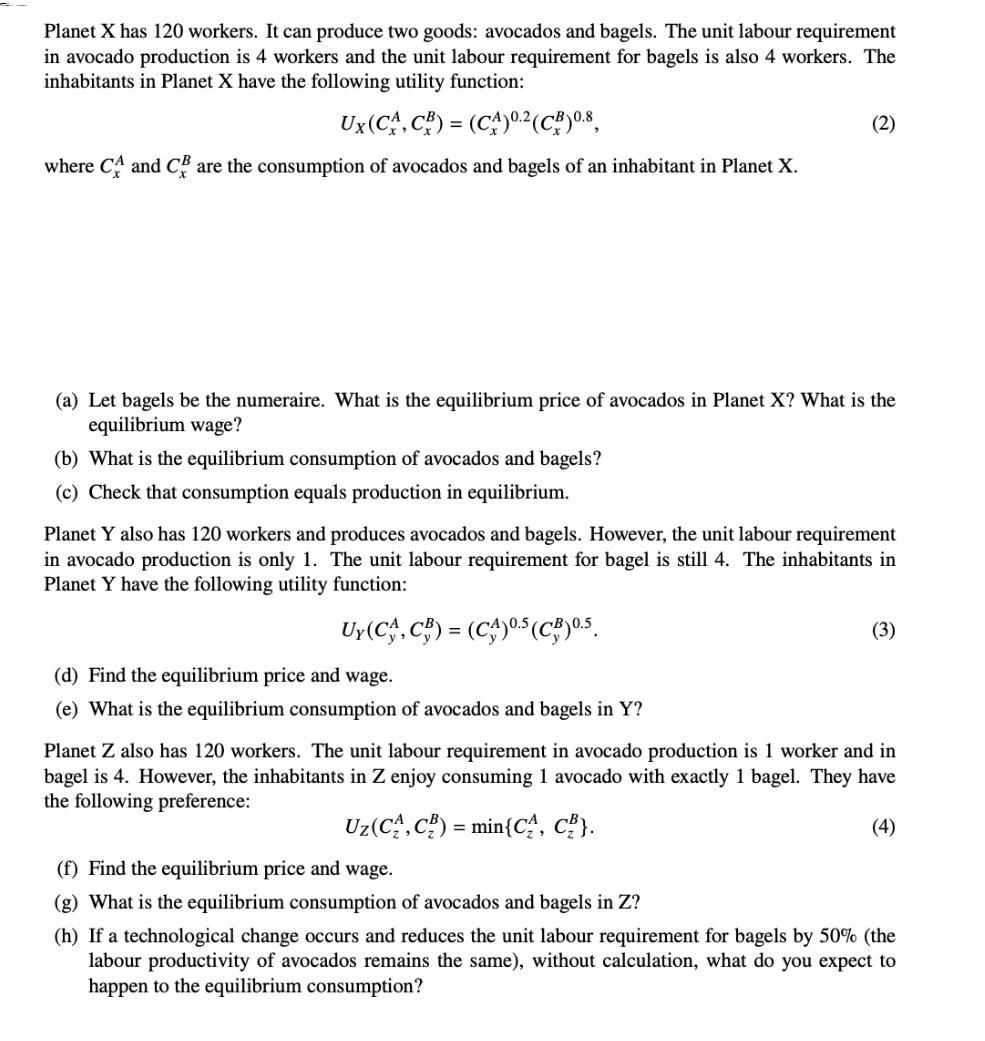Answered step by step
Verified Expert Solution
Question
1 Approved Answer
Planet X has 120 workers. It can produce two goods: avocados and bagels. The unit labour requirement in avocado production is 4 workers and

Planet X has 120 workers. It can produce two goods: avocados and bagels. The unit labour requirement in avocado production is 4 workers and the unit labour requirement for bagels is also 4 workers. The inhabitants in Planet X have the following utility function: Ux(CA, CB) = (CA)0.2 (CB) 0.8, where CA and CB are the consumption of avocados and bagels of an inhabitant in Planet X. (a) Let bagels be the numeraire. What is the equilibrium price of avocados in Planet X? What is the equilibrium wage? (b) What is the equilibrium consumption of avocados and bagels? (c) Check that consumption equals production in equilibrium. (2) Planet Y also has 120 workers and produces avocados and bagels. However, the unit labour requirement in avocado production is only 1. The unit labour requirement for bagel is still 4. The inhabitants in Planet Y have the following utility function: UY (CA, CB) = (CA)0.5 (CB) 0.5 (d) Find the equilibrium price and wage. (e) What is the equilibrium consumption of avocados and bagels in Y? Uz (C, C) = min{C, C}. (3) Planet Z also has 120 workers. The unit labour requirement in avocado production is 1 worker and in bagel is 4. However, the inhabitants in Z enjoy consuming 1 avocado with exactly 1 bagel. They have the following preference: (4) (f) Find the equilibrium price and wage. (g) What is the equilibrium consumption of avocados and bagels in Z? (h) If a technological change occurs and reduces the unit labour requirement for bagels by 50% (the labour productivity of avocados remains the same), without calculation, what do you expect to happen to the equilibrium consumption?
Step by Step Solution
★★★★★
3.45 Rating (161 Votes )
There are 3 Steps involved in it
Step: 1
a The equilibrium price of avocados in Planet X is equal to the wage rate At the equilibrium the wage rate is equal to the marginal rate of substituti...
Get Instant Access to Expert-Tailored Solutions
See step-by-step solutions with expert insights and AI powered tools for academic success
Step: 2

Step: 3

Ace Your Homework with AI
Get the answers you need in no time with our AI-driven, step-by-step assistance
Get Started


